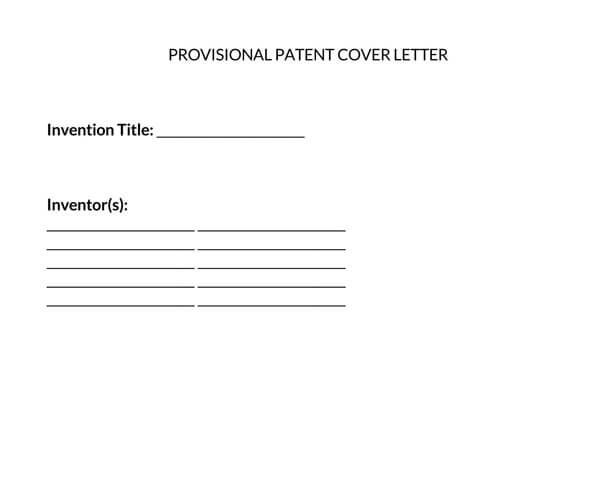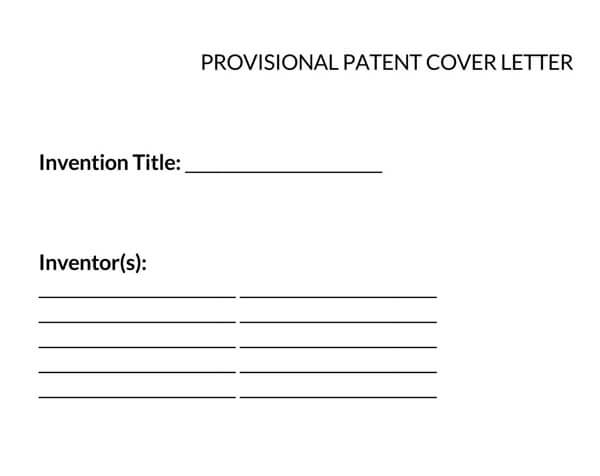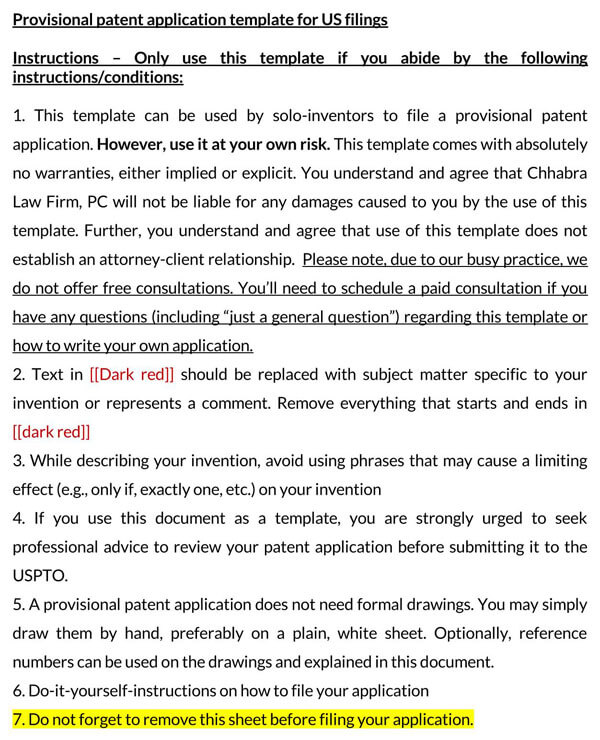A provisional patent application (PPA) is an official document filed in the United States Patent and Trademark Office (USPTO). The patent application sets an early filing date and gives the applicant a pending status. After applying, the applicant is not issued full patent rights unless they file for a regular (NPPA) non-provisional patent application within one year from the time of their application.
The provisional patent application includes a description of the item the applicant is looking to patent or specification and drawings of the invention. Simply put, the provisional patent application must clearly describe the item that the applicant is looking to patent to distinguish it from other inventions that have already been made.
When Should One Use a Provisional Patent Application?
A provisional patent application comes into play when one has an idea that they would like to protect from the public or any unauthorized parties, as they continue working on it. One can file for a PPA as soon as the idea has been conceptualized and is concrete and tangible enough to describe.
After filing the PPA, one can then make improvements to their initial design knowing well enough that their idea is well protected.Provisional patent applications are ideal when one has an idea/invention that they would like to be protected from the public as they work to refine the details and improve on their work.
What Should be Included in a Provisional Patent Application?
A provisional patent application should comprise all the key details of the invention. Basically, a provisional patent application is a description of one’s invention, and the description of such inventions should cover the following key areas:
- What the invention is set to accomplish or what it does
- How the invention works to accomplish its objectives
- The steps or components of the invention
It is also important to include a visual representation of your invention to go with the provisional patent application. Visuals for the provisional patent application can be informal and do not have to abide by any specific requirements required for a full patent application. You can submit computer illustrations, hand drawings, flow charts, photographs, and diagrams.
What Must a Patent Application Include?
The specification is comprised of several key elements. Mutually, all these elements form a description that clearly describes and distinguishes an invention. Every description should distinguish the invention clearly so that anyone who is knowledgeable in the field of invention can make and use it with ease without further experimentation.
The description should also disclose the best way of creating/developing, and using the invention. If the inventor has a better alternative to create and use the invention and fails to disclose it in their application, that failure could result in the loss of their patent right.
The specifics of a specification include:
- The title of the invention
- A background of the invention
- A summary of the invention
- A detailed description of the invention
The Claims of the Patent
Claims are detailed declarations of what the invention covers. Since the patent rights scope is usually based on what one declares in the claims, the claims are among the most significant section of the patent application. Ensure that your claims are carefully worded and accurately described to ensure that your idea is well protected.
The Drawings
You may also want to include the drawings or illustrations of your invention if necessary to show how your invention works. However, some applications may not include any drawings unless there is a process or chemical combination that needs to be illustrated by the use of a flowchart.Your drawings should clearly illustrate all the aspects of your invention as specified in the claims.
Filling Date Requirements
All provisional patent applications should name all the inventors. In the US. The patent law (USC 102(a)(1) and USC 102 (b)) provides a duration of one-year during which provisional patent applications can be filed following the patent holder’s public disclosure of their invention. In the event that the public disclosure is made more than a year before the date of filing of the provisional application, then the inventors are prohibited from patenting their invention in the US.
Fee
The fees required for one to file for a patent is usually subject to annual change. This, however, differs from state to state. When you are looking to patent your invention, first make sure to contact your state’s patenting officers to find out about the fees and other requirements that they may need.
Time Consideration
Patent application filing dates are very important as it is the set date for constructive reduction to practice. This is the official date that the patent office will consider your invention to have been made. This implies that unless you file evidence that the invention was made earlier than your date of application, your date of filing will serve as the date before which your publications, sales, and public use may serve as prior art against your invention.
How to File Your Patent Application
There are two main ways of filing a patent application:
- Filing by mail
- Filing electronically
In order for you to file a provisional patent application, you have to include a well-written description of your invention and include any drawings or illustrations to back up the subject matter of your invention. You should also make sure that the disclosure clearly provides a written description of the full scope of the invention. For any patent application, try and use high-quality professional drawings to help you secure the patent easily.
Free Patent Application Templates
Obtaining a patent is usually a lengthy and sometimes a very hard process that requires one to conduct some preliminary research. One must start by filling an application with the USPTO, which is then reviewed by the patent officers to ensure that it meets all the qualifications. You don’t want to go through all this process only to submit a document that does not have all the required information, which could set you back. Our templates will ensure that you don’t leave out any important information. Download our templates today and get started on your application.

Tips For Writing a Patent Application
When writing your provisional patent application, make sure that the following elements are well covered in your description:
- The title of your invention: Make sure that you include the title of your idea/invention. Be as detailed as possible to make anyone reading it for the first time have a clear understanding of what the invention is all about.
- Technical areas: To convince the application review committee that your invention is new and has never been made before, make sure that you capture all the technical aspects of your invention in the application.
- The background details and previous artwork of your invention: provide background information of your invention in the application to make it easy for the review committee to better understand when and how the idea came to be. You can also include some of the artwork you made while coming up with the idea to show some originality.
- A detailed description of what your invention solves: Inventions are made to make our daily lives much easier. Explain in detail why you came up with the idea and what you are looking to solve.
- A list of all the drawings included: Make sure you provide a detailed description of your idea. Take some quality photos of the prototype to have one and make sure to cover all the angles. Images can provide a much clear description of what you are making than words could at times.
- An in-depth description of your invention: You want to make sure that anyone reading the description can recreate what you are making with much ease. Provide a clear description of your invention to help set it aside from other inventions that have been made.
- An example or two of the invention use: Are there any other similar inventions that have been made before? Provide an example or two of what your invention does.

